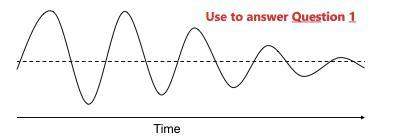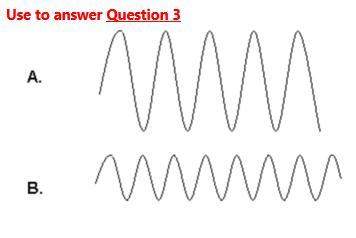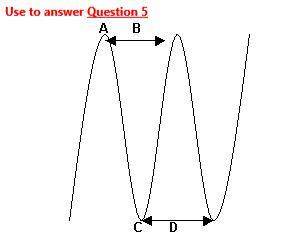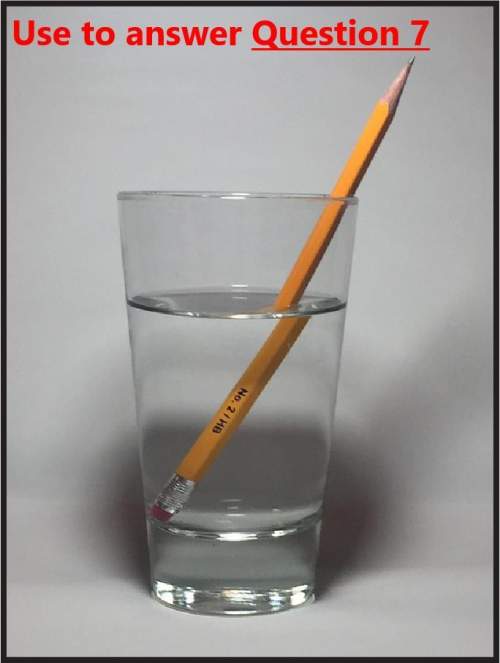1) as time passes, which of these is decreasing?
a) amplitude
b) crest
c) troug...

Chemistry, 04.10.2019 20:10 karinalovez
1) as time passes, which of these is decreasing?
a) amplitude
b) crest
c) trough
d) wavelength
2)which graph best represents the relative speeds of electromagnetic and mechanical waves through space?
a)
b)
c)
d)
3)which of these waves would have the greatest amount of energy?
a) a
b) b
c) their energy is equal
d) there is not enough information
4)at sunset, the sun appears reddish. what is most likely the reason for this phenomenon?
a) sunlight travels through a longer distance at sunset and interacts with more particles.
eliminate
b) sunlight travels through a shorter distance at sunset and interacts with more particles.
c) sunlight travels through a longer distance at sunset and interacts with fewer particles.
d) sunlight travels through a shorter distance at sunset and interacts with fewer particles.
5)the trough of a transverse wave is best shown by choice
a) a.
b) b.
c) c.
d) d.
7)mr. mann's students were studying the properties of light in science class. he told them to put a pencil in a beaker of water, make observations, and then draw what they observed. one group drew the picture seen here. mr. mann explained that when light passes from air into the water, the light waves bend, or and the pencil appears to be broken.
a) diffract
b) reflect
c) refract
d) transact





Answers: 2


Other questions on the subject: Chemistry

Chemistry, 21.06.2019 18:00, jeffcarpenter
Write a net ionic equation to show that hydrofluoric acid, behaves as an acid in water.
Answers: 1

Chemistry, 21.06.2019 20:30, notkeandre9
9. write the chemical equation for the following word equations. include symbols for physical states in the equation. a. solid zinc sulfide + oxygen gas -> solid zinc oxide + sulfur dioxide gas b. aqueous hydrochloric acid + aqueous barium hydroxide -> aqueous barium chloride + water
Answers: 1

Chemistry, 21.06.2019 22:10, lilyjordan5972
How do forces between particles in gases compare to forces in the other states of matter? o a. the forces in gases are stronger than forces in solids but weaker than forces in liquids. o b. the forces in gases are weaker than forces in solids but stronger than forces in liquids. o c. the forces in gases are weaker than forces in solids and liquids. o d. the forces in gases are stronger than forces in solids and liquids. submit
Answers: 1

Chemistry, 22.06.2019 03:30, ruleolivas
Asample of ammonia reacts with oxygen as shown. 4nh3(g) + 5o2(g) 4no(g) + 6h2o(g) what is the limiting reactant if 4.0 g of nh3 react with 8.0 g of oxygen? o2 because it produces only 0.20 mol of no. nh3 because it produces only 0.20 mol of no. o2 because it produces two times less no than nh3. nh3 because it produces three times more no than o2.
Answers: 3
You know the right answer?
Questions in other subjects:

Mathematics, 15.04.2021 18:20

Mathematics, 15.04.2021 18:20


Chemistry, 15.04.2021 18:20

Mathematics, 15.04.2021 18:20

Mathematics, 15.04.2021 18:20




Mathematics, 15.04.2021 18:20



